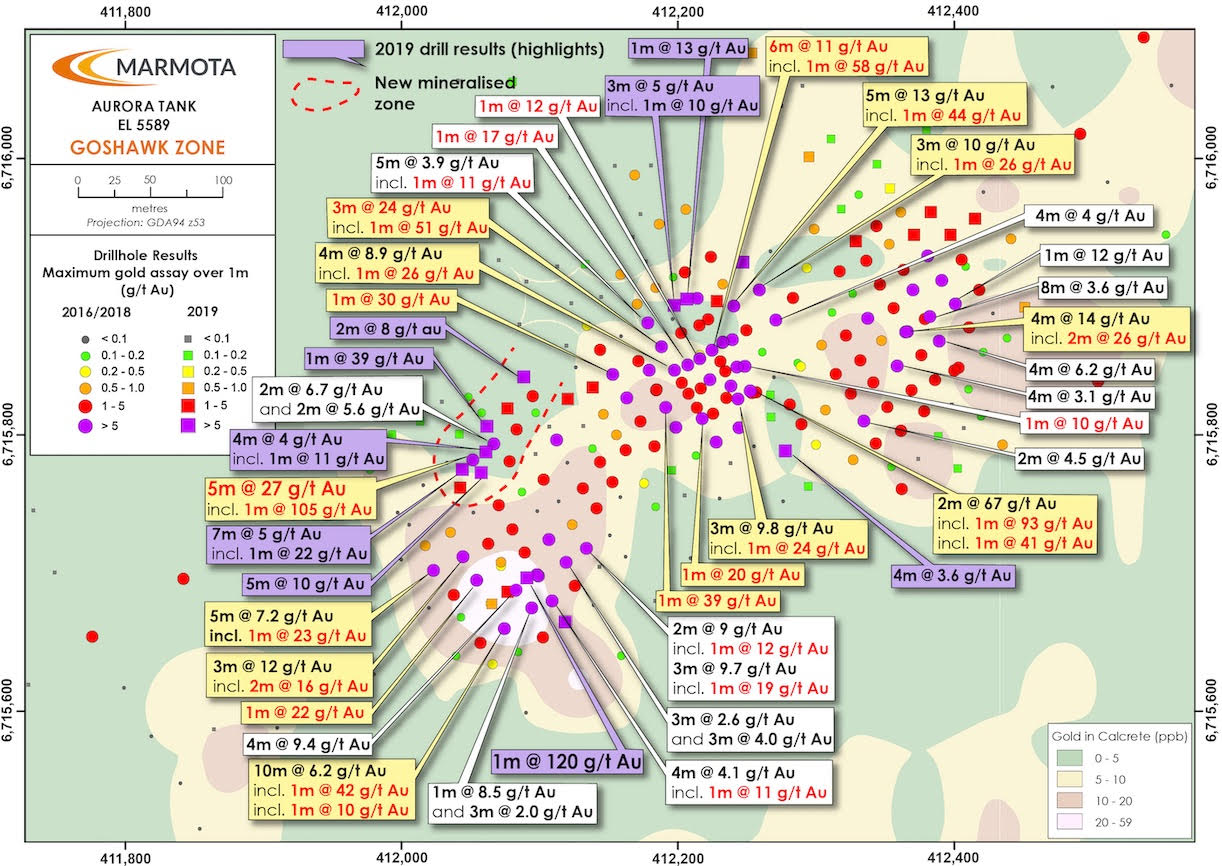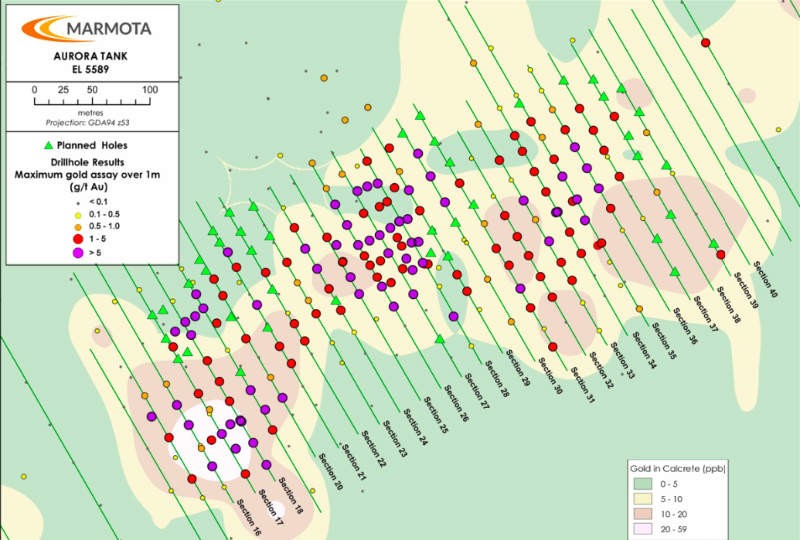Marmota is going full throttle with fresh gold drilling at Aurora Tank

Pic: John W Banagan / Stone via Getty Images
Special Report: While most gold explorers typically have just one way of finding gold, Marmota has two strings to its bow, which is proving a big advantage for the company.
The company’s Aurora Tank project in South Australia has all the ingredients for a successful development with high-grade intersections that are close to surface, potentially amenable to low cost open pit development and with excellent metallurgy.
This is clearly highlighted by Marmota’s (ASX:MEU) phase one aircore drilling earlier this year that returned outstanding drill results of up to 120 grams per tonne (g/t) gold from just 21m below the surface — well above the 5g/t benchmark for a high-grade hit.
Just check out the impressive grades:

And Marmota is wasting no time in following those top results up with a new phase two reverse circulation (RC) drilling program that is about to commence.
The company also has another very fruitful trick up its sleeve that is earning it recognition.
Marmota has found that elevated levels of gold in tree leaves can point the way to gold mineralisation.
Following tree samples has led the company to hits like 5m at 27g/t on the new NW flank.
Marmota’s exploration success based on tree sampling was recently featured in The Economist in May:

What’s more, the tree-sampling technique then led to a new hit a whopping 450m away from the main mineralisation at Aurora Tank– proof that it actually does work.
Marmota is finding gold in places traditional exploration methods would miss.
Results from a reconnaissance hole testing a biogeochemical target from sampling of Senna shrub leaves at the new “Two Fingers” prospect (450m away from any known mineralisation) delivered grades of up to 10g/t just 45m below surface.
That continued success from tree-sampling earned Marmota a place on the cover of New Scientist in August this year.
Ticking all the boxes
Ticking yet another box, subsequent metallurgical test work has shown that Aurora Tank ore is potentially amenable to low cost heap leach development.
Normally, companies process ore through a mill, which is expensive to both build and operate.
However, sometimes, if metallurgical conditions are favourable, a company can instead process ore using a low-capex heap leach process that does not require a mill.
The potential downside of the heap-leach approach is that it usually yields much lower gold recovery rates. But in more good news for Marmota, the first column leach test for Aurora Tank ore returned gold recoveries of 83 per cent.
This is considered to be a very high level by industry standards and could potentially be improved further by optimising crush size, changing particle size along with potential for different recovery rates from different parts of the orebody.
All this combined means Marmota is looking at potentially a low-cost, low-capex heap leach operation.
“A heap leach would mean that Marmota would not need to construct a mill, nor share revenue with external parties for toll treatment in a mill,” chairman Dr Colin Rose says. “This is a highly desirable outcome for both the company and our shareholders.”
Aurora Tank could operate similarly to the highly successful White Dam gold mine in South Australia, which was also a heap leach operation.
Building a star team
And to achieve that, Marmota recently tapped the former principal metallurgist and manager of processing at White Dam, Shane Barker, to join the company as executive director – production.
Not only did Barker oversee the successful operation of White Dam, but he also has years of experience under his belt with big name miners such as BHP (ASX:BHP) (specifically on the major’s Olympic Dam expansion study, Kalgoorlie and Kambalda operations), Evolution Mining (ASX:EVN), Ross Mining and Sons of Gwalia.
Marmota says Barker’s skills will be pertinent to bringing the Aurora Tank gold discovery into production.
The road ahead
With a successful 2019 phase one drilling program and metallurgical testing already in the bag, the company is now gearing up for the phase two deeper RC drilling at Aurora Tank.
The phase two program consists of about 5,000m of drilling, with 60 holes that will be drilled to an average depth of 85m.

This will test extensions to the north, northeast and east of the main Aurora Tank mineralised zone, test the size and extensions to the new northwest flank, define the Two Finger biogeochem zone and test a new biogeochem zone to the southeast of the main mineralised zone.
All necessary approvals are already in place and drilling is expected to take about two weeks to complete. Drilling is planned to begin very soon, in the last week of November.
Now Read:
Detailed hits of 120g/t paint golden picture for Marmota
Reading tree leaves works – gold hunter Marmota hits grades of over 30g/t
Golden fungi could reveal the location of monster deposits
This story was developed in collaboration with Marmota, a Stockhead advertiser at the time of publishing.
This story does not constitute financial product advice. You should consider obtaining independent advice before making any financial decisions.
UNLOCK INSIGHTS
Discover the untold stories of emerging ASX stocks.
Daily news and expert analysis, it's free to subscribe.
By proceeding, you confirm you understand that we handle personal information in accordance with our Privacy Policy.








